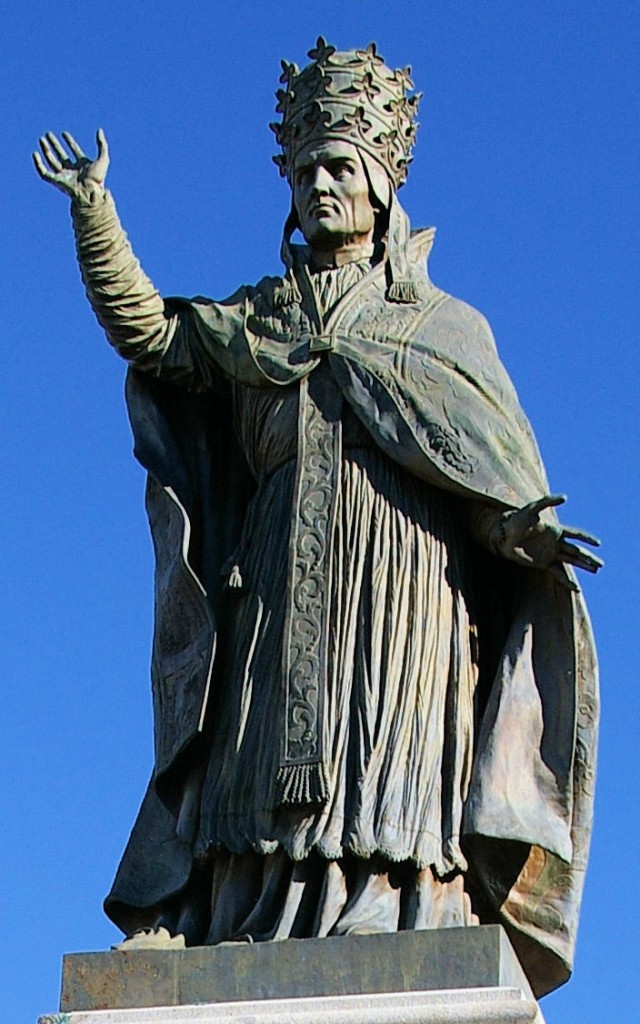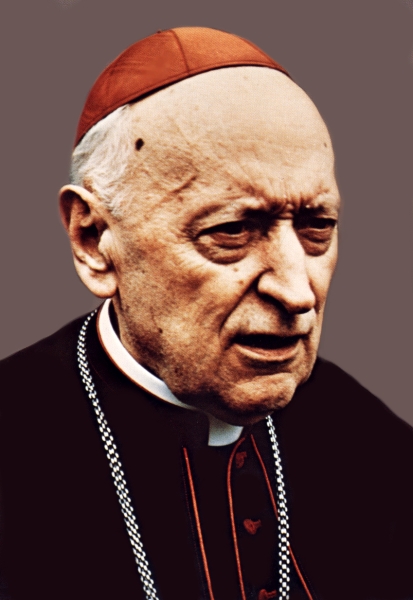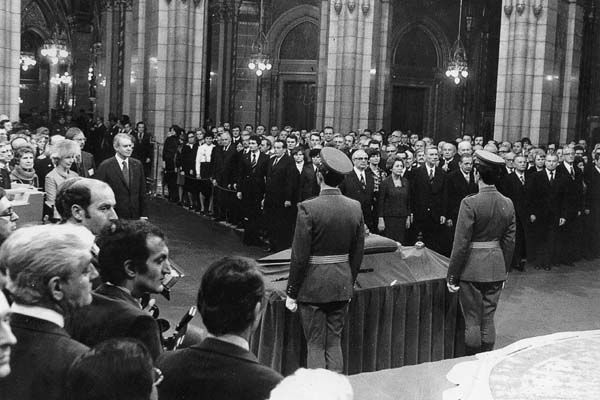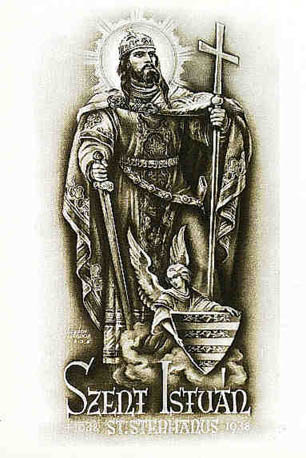By a super-majority, Hungary recently approved a new constitution. This amazing new fundamental law opens with the phrase “God bless the Hungarians.” It changes the country’s name from “The Hungarian Republic” to simply “Hungary.” It defines marriage as the union of one man and one woman; stipulates that life is to be protected from conception to natural death; breaks with the egalitarian “one man, one vote” rule to allow future legislation to provide a second vote to mothers with minor children; caps national debt at 50% of GDP; and refers to Saint Stephen’s Holy Crown “as the embodiment of the constitutional continuity and unity of the nation.” In light of such a dramatic event, we believe this republished article will amaze our readers with its timely insights.
by Prof. Plinio Corrêa de Oliveira
First published in the Folha de São Paulo, on January 16, 1978
Once upon a time there was a strong and intelligent people who lived in a beautiful land. Everything about them would have made their existence easier, directing them towards a glorious future, were it not for the innumerable centuries of barbarianism weighing heavily upon them. Along with barbarianism came primitive and crude beliefs, pagan customs, and the vice of living at the expense of one’s neighbors by means of predatory wars.
All of this was about the year 1000. Astonished with the age that it had reached, the civilized world imagined itself old. An extravagant few even thought it was going to end.
Downtown Győr, Hungary, with the Basilica.
However, the world—and more precisely the West—was just giving birth to the glories of civilization that afterwards shone forth therein.
Here and there, valorous men began guiding the people along paths leading to prosperity and grandeur.
There were many saints among these men. As a matter of fact, men of distinction of that time agreed in the conviction that in substance, the highest merit of a man consisted in being a saint. A warrior, a wise man, a monarch, or a pope would fulfill his capacity entirely only when his wisdom, his heroism, his ability to govern souls or nations was carried to its zenith through sanctity’s unequaled force of propulsion.
We are drawing close to the year 2000. The world was then in the year 1000! How everything has changed! Today, at the head of great human activities, where are the men overflowing with Christian vitality that began uplifting the world in the year 1000?
But—someone might object—how much greater is the world’s progress in this final quarter century before the year 2000!
We shall not dwell on this fluffy, hollow, and tedious question. He who sees this question clearly, has no need of any explanation; and no explanation will help him who does not see it clearly.
At any rate, in that remote year 1000, the Church had the good fortune of being governed by a great Pope, Sylvester II. How authentic was his pastoral zeal! It encompassed the entire civilized world and penetrated even the barbarian world, seeking souls to convert. Thus it was that in the midst of that barbarian people, he noticed a true flower rising up out of the night of barbarianism. This was the young duke, Stephen, who asked the Church for a title of king and the grace of instituting an ecclesiastical hierarchy in Hungary, his newly-converted country.
Along with his paternal consent, Sylvester II sent to the banks of the Danube such a masterpiece that none better could be made by a jeweler of our time. It was a kingly crown from which pearls and precious stones of various colors, all encrusted in gold, shone forth. The young king donned the crown with the inflexible intention of fulfilling the hopes of the Pope. Indeed, from the year 1000 until our day, no king of Hungary has ever been greater than he was. The Church canonized him. His feast day was fixed on the Church calendar. From that time until this day, the same supplication arises on his feast from the hearts of the faithful all over the globe: “Saint Stephen, pray for us!”
Crown of St. Stephen, King of Hungary
Throughout these 1000 years the crown of Saint Stephen has been accepted by the Hungarian people as the symbol of their country’s very sovereignty. Only he who possessed the crown was accepted as their authentic leader. And it remained exactly so up until our days.
Let us now switch—or rather plunge—from the marvelous panorama depicted in a medieval illumination of St. Stephen’s Hungary, into the nightmarish panorama of Janos Kadar’s Hungary. On one side, under the august and paternal influence of Pope Sylvester II, we have Saint Stephen. On the other side we have Brezhnev’s puppet, Janos Kadar. Could it have been a more breath-taking fall?
Communists all over the world claim that, with the invasion of Hungary by Soviet troops at the end of 1944 and the establishment of an atheistic Communist regime in the country, its people has been freed from the yoke of its traditional structures. Thus, in true freedom (that is, the “freedom” of Communism) people have known the true light (that is, the light of atheism). However, from 1945 until now, Hungary’s Communist regime has done nothing but restrain religious freedom and employ all forms of pressure—including psychological and police methods—in order to extirpate from the nation’s spirit everything the crown had once symbolized.
Crown, Sword and Globus Cruciger of Hungary
Nevertheless, the facts demonstrate that the efforts of the rulers have yielded little return.
In fact, the Hungarian government kept the primate of Hungary, Cardinal Mindszenty, confined to the embassy of the United States in Budapest. This aged and isolated prelate, who has been kept in the land of Saint Stephen under a heavy curtain of silence, disturbed the sleep of government officials, regardless of how much they were supported by the power of their cannons, their censorship, and their police forces. They were unable to rest peacefully until they managed to have Paul VI utilize Obedience—the only force before which the great anticommunist Cardinal ever inclined himself—to remove him from Hungary.
However, this was not enough. Counting once again on the support of the Holy See, the Communist government managed to obtain an oath of fidelity from all the Hungarian bishops. Here we see Kadar’s Hungary, or rather, Kadar’s pseudo-Hungary, seeking to support itself on the remnants, or on the appearances, of Saint Stephen’s Hungary in an attempt to survive.
And now the final thrust of this policy has just been played.
Cardinal Mindszenty, Archbishop of Ezstergom
Everyone knows that on the eve of the rise of the Communist regime in Hungary, Hungarians whose names were never disclosed by the press, prevented the very symbol of the legitimacy of all power in Hungary—that is, Saint Stephen’s Hungary—from falling into the claws of the invaders. Thus it was that the crown was entrusted to the greatest and richest earthly power that history has ever known.
Meanwhile, the people of Hungary remained adamant in not recognizing the power of those newcomers on whose heads the crown of Saint Stephen did not shine. For this reason, the envoys of Brezhnev in Budapest remained unable to sleep peacefully. Indeed, with their little cannons, how could they inspire fear in the Americans, with their super-cannons, in order to extort that incomparable relic from them?
It is not certain that Brezhnev was consulted on this matter. If he was, he most certainly laughed, saying: “Ho! What cannons? Is there anything more outdated or more useless in this era of Carter’s ‘détente’ and Paul VI’s ‘Ostpolitik’? Flattery will easily obtain from them the concessions that they desire so much to give us.”
Here are the facts. In order to help keep the Hungarian Communists in power, the highest sovereign of the most powerful democracy of the West delivers to Kadar the crown, the relic that was entrusted to the American nation as a deposit of honor. Carter ordered that Secretary of State Vance hand it over, in a pompous ceremony, precisely to a man who is the contrary of the Apostolic King, that is, to a materialistic despot.
January 6, 1978: U.S. Secretary of State Cyrus Vance (center of photo, at left) represents the United States at a Budapest ceremony marking the return of the historic Crown of St. Stephen and other coronation regalia to Hungary by the United States. An SY special agent stands behind the Secretary's right shoulder. The crown and assorted Hungarian royal regalia were confiscated by U.S. troops in Budapest at the end of the Second World War, to ensure they would not be seized by the Soviet Union. (Source: Interfoto MTI Feature Service, Budapest)
Regarding this matter, a Vatican spokesman uttered some comments that amount to an ambiguous whisper, and perhaps a slightly embarrassing one. But in order to show to all Hungarians that the Church was in agreement with the handing over of the relic to the Communist and atheistic dictator, the ceremony was attended by Cardinal Lekai, the Archbishop of Ezstergom, who is the successor—horresco referens—to Cardinal Mindszenty.
Before the eyes of God, of the world, and of history, both Vance and Lekai were there, as though shouting to the Hungarians: “The Church and the United States approve that your baptized heads, and along with them all the glories of your sovereign and Christian people, be crushed by Moscow’s Communist and atheistic envoys.”
We are certain that, with tears of indignation, innumerable Hungarians inside and outside Hungary replied to that shout: “Saint Stephen, pray for us!”
St. Stephen of Hungary
From the depths of their souls, countless Americans have said the same, even though some are sleepy due to the apathy invading even the healthier sectors of public opinion.
This supplication will not have mounted to heaven in vain. By introducing the relic into Hungary, Kadar has created an invaluable situation to make Saint Stephen’s intercession for his people all the more ardent. Carter and Paul VI inadvertently helped the crown-symbol, the crown-relic, enter into Hungary where its presence perhaps may attract legions of angels and torrents of graces in such a way that the Hungarian people will throw off the yoke under which they lie.
Our thoughts turn to those who devised the return of the crown, and a phrase comes to our lips: “Qui habitat in coelis irridebit eos.” God will laugh at them, say the Holy Scriptures (Ps. 2:4).








No comments:
Post a Comment